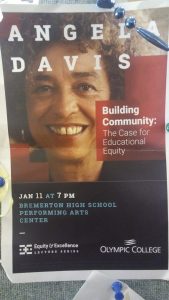ComAlt, Sarah Williams.
Seminar Response Paper, Wk 4.
Zoe Wright.
1/31/17.
Racial Indigestion Chapter 2; Secret Financial Life of Food Chapters three and four.
“The magnitude of popular interest in bread may also have been due to the changing dietary habits of Americans. Early in the nineteenth century many reformers were concerned with the increase in meat consumption and the decline in the amount and quality of bread production.” (Tompkins, 60)
“The disparity was clear: cotton was for the rich and powerful; corn was for the poor. Corn was the main staple of slave diets (the standard ration of corn for slaves was a peck of corn a week, or about 2 pounds of corn a day).” (Newman, 32)
“In a new study in Applied Economics, Palma et al seek to reveal consumer motivations behind willingness to pay for expensive foods versus valuation of food attributes. Could it be fashion, a bid for prestige or a statement of wealth and social standing?” (ScienceDaily, 2016)
I chose the lines from Tompkins because it connected to the conversations around diets and nutrition that happen in current times. These conversations being around what foods are considered healthy, fad diets, and a seemingly opposite view of bread and meat than is expressed in these chosen lines. In current times meat is considered the healthy staple while bread is the carb and sugar ridden demon of weight loss represented in Hollywood films.
I chose the lines from Newman because the connection it made between the perceived value of food by different social classes. There are still foods that are associated with being low class, poor, or from particular racial or ethnic backgrounds. There are sections in supermarkets labeled ‘hispanic’ or ‘asian’. And there have been fairly recent dog whistle campaigns that connect certain foods with being lower class, on welfare, or of those particular backgrounds.
I chose this report of a study done on social class and perceived value of food because it makes it evident that these discussions are still being had recently, and are still important.
I find these connections between the perception of value placed on food based on associations with race, class, or wealth interesting because of the way they are used for things like dog whistle politics, targeted advertising, and the cultural shame that is associated with consuming certain foods because of the interactions of your various social status.
Reference: Palma, M., Ness, M., & Anderson, D. (n.d.). Food purchasing and social status perceptions — ScienceDaily. Retrieved February 1, 2017, from https://www.sciencedaily.com/releases/2016/07/160718104332.htm

